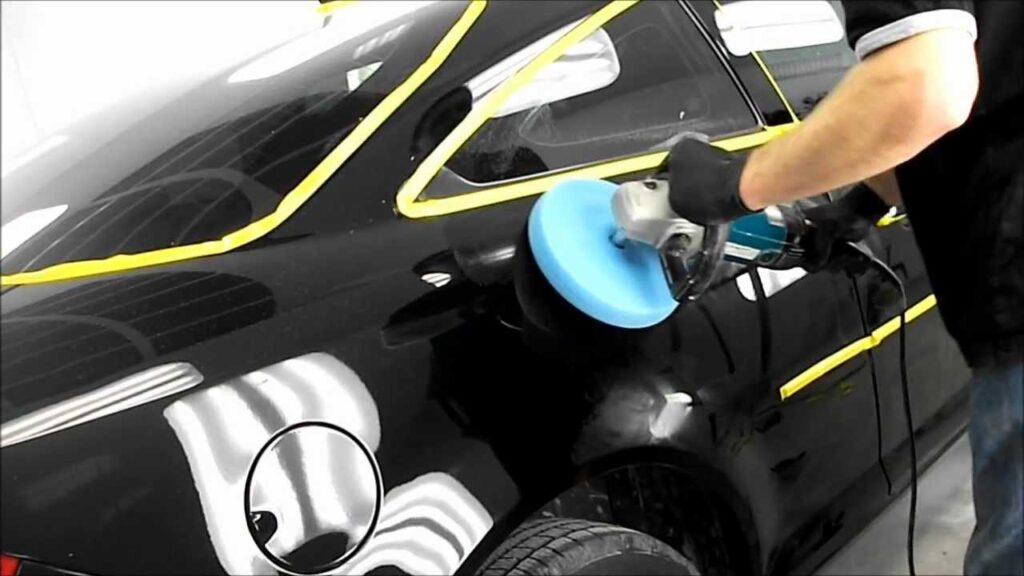Introduction
Hard water spots are a car owner’s nemesis. They sneak up on you after a car wash, parking under sprinklers or even rain. These unsightly spots not only ruin the aesthetics of your car but can also cause long-term damage. So, how do you safely remove hard water spots and keep your car’s paint pristine? Let’s explore!
What Are Hard Water Spots?
Definition and Formation
Hard water spots are mineral deposits left behind when water evaporates. They often consist of calcium, magnesium, and other minerals. When water droplets dry on your car’s surface, they leave these residues behind, creating white, chalky spots.
Common Causes
- Washing your car with hard water.
- Exposure to sprinklers or garden hoses.
- Rain containing high mineral content.
Why Hard Water Spots Are Harmful
Damage to the Car’s Paint
The minerals in hard water can etch into the clear coat of your car leaving behind stubborn marks that are difficult to remove. Over time, this can degrade the paint’s finish.
Long-Term Effects
If left untreated, hard water spots can cause permanent damage, leading to discoloration, rough textures and the need for costly repainting.
Tools and Products You’ll Need
- Tools: Microfiber towels, sponges, spray bottles.
- Products:
- White vinegar.
- Baking soda.
- Commercial water spot removers.
- pH-balanced car shampoo.
- Protective wax or ceramic coating.
DIY Methods for Removing Hard Water Spots
Method 1: Using Vinegar Solution
- Mix equal parts white vinegar and water in a spray bottle.
- Spray the solution on the affected areas and let it sit for a few minutes.
- Wipe with a microfiber towel and rinse thoroughly.
Method 2: Baking Soda Paste
- Create a paste using baking soda and water.
- Apply it to the spots and gently rub using a soft cloth.
- Rinse off and dry with a clean towel.
Method 3: Commercial Water Spot Removers
- Follow the instructions on the product label.
- These are specially formulated to break down mineral deposits without harming the paint.
Step-by-Step Guide to Removing Hard Water Spots
-
Preparation
- Wash your car thoroughly with a pH-balanced shampoo to remove dirt and debris.
- Dry the surface to prevent additional water spots.
-
Apply the Solution
- Use your chosen method (vinegar, baking soda or commercial product).
- Work in small sections to ensure even application.
-
Rinse and Dry
- After treating the spots, rinse the area thoroughly.
- Use a microfiber towel to dry the surface completely.
When DIY Isn’t Enough: Professional Help
Sometimes, hard water spots are too stubborn for DIY solutions. Professional car detailing services like GlossZilla Car Detailing Studio can use advanced tools and techniques to restore your car’s shine.
Preventing Hard Water Spots
Tips to Avoid Water Spots
- Dry your car immediately after washing.
- Use distilled or filtered water for car washes.
- Park in shaded areas to minimize water evaporation.
The Role of Ceramic Coatings and Waxes
Applying a ceramic coating or wax creates a protective barrier preventing minerals from bonding to your car’s surface.
Common Mistakes to Avoid
- Using Harsh Chemicals: Avoid products that can strip the paint or damage the clear coat.
- Skipping Aftercare: Always apply wax or sealant after removing water spots to protect the paint.
FAQs About Hard Water Spots
1. Can hard water spots permanently damage paint?
Yes, if left untreated, they can etch into the clear coat and cause permanent damage.
2. Are household products safe to use?
Yes, vinegar and baking soda are effective, but always test on a small area first.
3. How often should I clean my car to avoid water spots?
Wash your car at least once every two weeks, especially if exposed to hard water.
4. Can wax or ceramic coating prevent water spots entirely?
They can reduce the likelihood of spots but won’t prevent them entirely. Proper washing and drying are still necessary.
5. What’s the best way to dry my car after washing?
Use a microfiber towel and work in sections to prevent water from evaporating and leaving spots.

